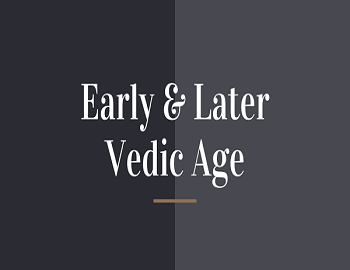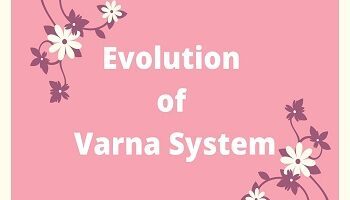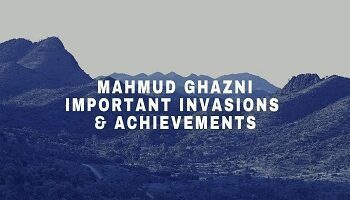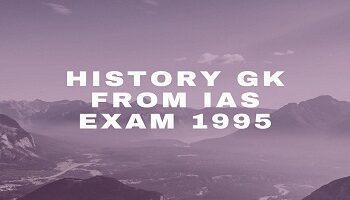Table of Contents
Early and Later Vedic Age:
- Early Vedic Period or Rig Vedic Period- (1500 B.C. – 1000 B.C.).
- Later Vedic Period- (1000 B.C.-600 B.C.).
- The vedic culture was rural. There is almost complete absence of towns in the Rigvedic period.
- Aryan was defined as a group of Indo-European Languages by Max Muller.
- Iron – first time references of iron was found in later vedic phase.
- Famous Dasrajna Yudha or Battle of Ten Kings alluded in various hymns of Rigveda fought between sudas, a Bharata king of tritsu family and the confederacy of ten well known tribes like puru, yadu, turvasa etc. This battle fought on the bank of river Parusni (Ravi) and Bharatas emerged victorious.
- The author of Ramayana was Valmiki and that of Mahabharta was Vedavyas.
Original Home of the Aryans:
- Dayanand sarswati- Tibet.
- B.G.Tilak- Arctic / Polar region.
- Penka- Germany.
- European Scholars- Baltic sea region.
- Ganganath Jha- Brahmarshi-desha.
- L.D.Kalla- Kashmir and Himalayas.
But the consensus lies in Central Asia (Max Muller) being the original home of Aryans.
Vedic Literature:
- The word veda means Knowledge.
- Anitya – Eternal (without end).
- Apaurusheya- not made by man.
- Oldest and Earliest Veda- Rig Veda.
- Vedic Literature refers to the following–
- Four Vedas – Rig, Sama, Yajur, Atharva.
- Brahmanas attached to each Samhita.
- The Aranyakas.
- The Upanishads.
Rig Veda:
- Oldest religious text in the world.
- First testament of Mankind.
- Collection of hymns in praise of number of gods and goddesses.
- 1028 poems or hymns in Rig Veda.
- 10 Books (Mandalas).
- Gayatri Mantra – composed by sage Vishvamitra and addressed to goddess Savitri (a solar deity).
- Purusha Sukta hymn- origin of varna system (Tenth Mandal).
- Surya Sukta hymn – reflects upon the marriage ceremonies (Tenth Mandal).
Sam Veda:
- The word saman means melody.
- Collection of hymns for the purpose of chanting of mantras.
- Origin of Indian Music.
- To be sung at the time of Soma Sacrifice by Udgatri Priest.
Yajur Veda:
- Sacrificies and Rituals.
- Manual of Adhvaryus Priest.
- White (Shukla) yajurveda, Black (Krishna) yajurveda.
- It contains the old prose literature of the Indo-European.
Atharva Veda:
- Charms and Spells.
- Indian Magic.
- Found in two recensions- Saunakiya and Paippalada.
- 20 Kandas (Books) and 711 hymns- most of tell us how to ward off evil spirits.
Brahamanas:
- Books attached to vedas.
- Explanation of Vedic Sacrificies.
Aranyakas:
- Forest Books – they are supposed to contain some secret knowledge related to life, metaphysical aspects. Also deal with mysticism.
Upanishad:
- Derived from the root “upnish” which means to sit down near someone. It indicates the tradition of student and teacher.
- Pure Philosophical Text.
- Also known as vedanta because they represent end of vedic literature.
- Defined the doctrine of Action (Karma), God(Brahma) and Soul (Atma) as identical.
- Anti-ritualistic.
- 108 upanishad and were composed around 800 and 500 B.C.
- Language is classical sanskrit and not vedic sanskrit.
- “Tatt Tvam Asi” – That thou art / You are that – Chandogya Upanishad.
- Satyameva Jayate is a mantra from the ancient Indian scripture Mundaka Upanishad.
Allied Vedic Literature:
Vedangas- Limbs of Vedas:
- Shiksha – Pronunciation.
- Kalpa – Rituals.
- Vyakarana – Grammar.
- Nirukta – Etymology / Phonetics.
- Chhandas – Metrics / Metre.
- Jyotisha – Astronomy.
Darshanas:
They propogate the virtues of life. The six schools of Indian Philosophy are-
- Nyaya – written by Gautama.
- Vaishesika – written by Kanada Rishi.
- Samkhya – written by Kapila.
- Yoga – written by Patanjali.
- Purva Mimamsa – written by Jaimini.
- Uttara Mimamsa– written by Badarayana.
Upaveda:
- Dhanurveda – Art of Warfare.
- Ayurveda – Science of Life.
- Shilpaveda– Architecture.
- Gandharvaveda – Music.
Geography:
Early Vedic Age:
- Sapta Sindhu Region (the land of Seven rivers).
- Indus – Sindhu.
- Jhelum – Vitasta.
- Chenab – Asikni.
- Ravi – Parushani / Irawati.
- Beas – Vipas.
- Satluj – Kshutudri.
- Ghaggar – Saraswati .
- Core area of activity during early vedic period is Punjab-Delhi region.
- Most important river – Saraswati.
Later Vedic Age:
- Eastward migration.
- Core area – doab area.
- Important river – Ganga-Yamuna.
Society:
Early Vedic Age:
- Tribals and nomadic.
- Social division – varna system (Brahamana, Kshatriya, Vaishya, Shudra).
- Varna System is not hereditary.
- Aryans and Non-Aryans concepts.
- Non-Aryans– Dasas, Dasyus, Panis.
- Dasyus– were hated most.
- Panis– engaged in economic activities, mercantile activity, cattle breeder.
- Women enjoyed good status- provide education, participation in political assemblies.
- No evils were present in society like sati, child marriage etc.
- Widow remarriage prevalent.
- Patriarchal family – eldest male member is head.
Later Vedic Age:
- Varna System – Hereditary.
- Women status degraded.
- Settled society.
Economy:
Early Vedic Age:
- Pastoralism (cattle rearing) economy.
- The word used for wealthy person – gomat (person having more cattles).
- Agriculture- staple food- Barley (Yava) alongwith milk and milk products and meat also.
- No evidence of rice.
- Metal- only Copper (Lohitayas).
Later Vedic Age:
- Settled agriculture.
- Crops- Rice (Vrihi).
- Metal- Iron (Krishnayas)- first time iron is used in this period.
Polity:
Early Vedic Age:
- Family-
- Tribe (Jana) – headed by Rajana, Gopati.
- Clan (Vish) – headed by Vishpati.
- Group of families (Grama) – headed by Gramani
- Family (Kula) – headed by Kulapati.
- King–
- Tribal Chiefs.
- Rajana, Gopati (titles of king).
- Elected by political assemblies.
- Tax – bali (voluntary gifts which the people of tribe offer to king).
- Assembly-
- Sabha – Assembly of Elders.
- Samiti – Assembly of entire tribe.
- Vidhata – Booty distribution- distribution of war spoil.
- Sabha and samiti are called as twin daughters of god Prajapati.
- Both sabha and samiti participate in king election.
Later Vedic Age:
- Territorial Polity.
- Emergence of number of tribal settlements- Janapadas.
- King- title (Bhupati) – lord of land/territory.
- Kingship become complete hereditary.
- Role of Assemblies ended.
- King forced his subject to give tax (Bali – mandatory).
Emergence of officials:
- Purohita – Priest.
- Senami – Commander of chief.
- Mahishi – Chief Queen.
- Baghadugha – Tax Collector.
- Akshavapa – superintendent of dice / gambling.
Emergence of Royal Ceremonies / Grand Sacrifices.
- Rajasuya – Royal Consecration.
- Vajapeya – Drink of Strength – chariot race was performed.
- Asvamedha – Horse Sacrifice.
Religion:
Early Vedic Age:
- Centred around worship of various deities; Male dominated; personified powers of nature.
Indra:
- Most prominent god- 250 hymns dedicated to Indra in Rigveda.
- Efficient car-warrior (rathestha), a winner (jitendra) & soma drinker (somapa).
- His father is Dyaus (heaven).
- Purandara – destroyed the forts of his enemies.
- Aryan war lord fulfilled the dual function of war god and weather god.
- Associated with storm and thunder, rain and his hand bore thunderbolt (vajra).
- Shatakratu (possessing hundred powers); Vritraham (slayer of Vritra); and Maghavan (Bounteous).
- His wife is Indrani or Sachi (energy).
Agni:
- Second position is held by agni. 200 hymns in Rigveda addressed to fire god (agni).
- Intermediary between gods and men.
- Varuna- Ritsya-gopa (protector of cosmic order).
- Rudra- God associated with forest- only god with negative trait in Rigveda.
- Saraswati- River Goddesses.
- Ashwins- Divine Physicians.
- They believe many in one – Monotheistic.
Later Vedic Age:
- Change in position of deities.
- Important – Brahma (creation), Vishnu (sustain / protector), Shiva (destroyer).
- Concept of trinity but still monotheistic.









Comments (No)